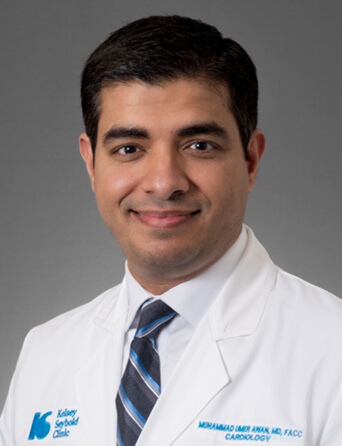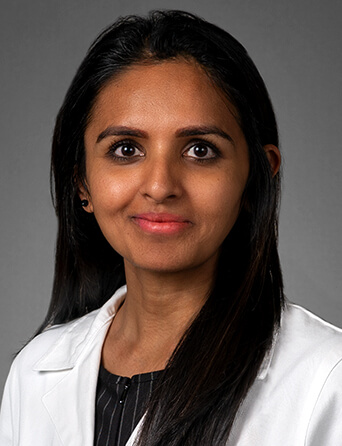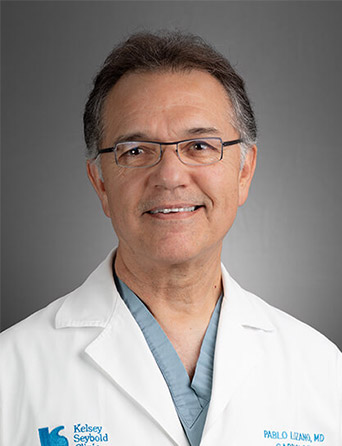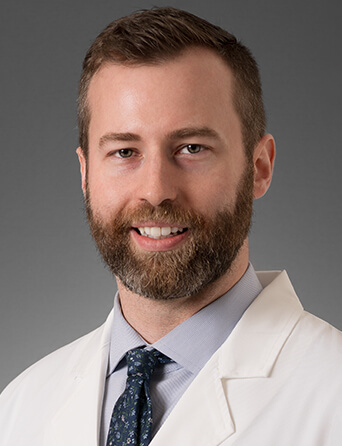Join Our eNewsletter!
Subscribe to our monthly newsletter to receive encouraging advice to help you lead a healthy lifestyle.

Aortic Aneurysm: The Silent Killer
Most of us are very aware of heart attack, stroke, and other common cardiovascular issues, but aortic aneurysm is a lesser known - yet just as serious - heart condition responsible for upwards of 15,000 deaths each year in the U.S.
An aortic aneurysm presents as a bulge in the aorta, which is the large artery that carries blood from the heart to other organs. The bulging causes the arterial wall to weaken and, as the aneurysm grows, it can tear or rupture, potentially causing death.
The condition has claimed the lives of renowned scientist Albert Einstein, actors George C. Scott, John Ritter, and Lucille Ball, and, most recently, sports journalist Grant Wahl, who collapsed and died from a ruptured aortic aneurysm during the 2022 World Cup.
Aortic aneurysm is often referred to as a "silent killer" because many people aren't aware they have an aneurysm until it tears or ruptures.
Aortic Aneurysm Dissection and Rupture
Tearing, or dissection, occurs when the aneurysm causes the lining of the aortic wall to open, causing blood to leak into the aortic wall and separating the layers of the lining.
If the aneurysm bursts completely, causing internal bleeding, it's called a rupture.
Both dissection and rupture are considered life-threating emergencies. Almost 75% of people with a ruptured or dissected aneurysm die as a result.
Types of Aortic Aneurysm

There are two types of aortic aneurysm: abdominal and thoracic.
An abdominal aneurysm occurs in the part of the aorta that's below the chest, near the abdomen. They happen more often than thoracic aneurysms, which occur in the part of the aorta located in the chest. Abdominal aneurysms are more common in men than women and in people 65 and older. They're also more common among white people.
They're usually caused by a hardening of the arteries, and in 75% of cases there's a history of smoking.
Thoracic aneurysms are equally common in men and women and become more common as people age. They're typically caused by high blood pressure or sudden injury but can also be a result of inherited connective tissue disorders, such as Marfan or Ehlers-Danlos syndrome.
Symptoms of Aortic Aneurysms
Both types of aortic aneurysm tend to lack noticeable symptoms until they tear or rupture, but some aneurysms start small and stay small, never tearing or bursting.
If an abdominal aortic aneurysm grows large enough, you may experience:
- Deep, throbbing pain in the abdomen, back, or side
- A pulsing near the bellybutton
- Pain in the buttocks, groin, or legs
Thoracic aortic aneurysms tend to grow slower than abdominal aneurysms, so symptoms may come on more gradually, if they become noticeable at all. As the aneurysm grows, you may experience:
- Tenderness or pain in the chest or upper back
- Unexplained cough
- Weak, hoarse voice
- Shortness of breath
- Trouble swallowing

The sudden symptoms that can occur when an aortic aneurysm has dissected or ruptured are similar for both types and include:
- Sharp pain in the chest, back, or abdomen (depending on where the aneurysm is located)
- Lightheadedness or dizziness
- Dangerously low blood pressure
- Loss of breath
- Loss of consciousness
All of these symptoms signal a life-threatening situation and require immediate medical care.
Prevention and Screening
Although aortic aneurysms are difficult to detect and often aren't diagnosed until they rupture or tear, there are some measures you can take to help prevent and detect them before they become life-threatening.
To keep your blood vessels as healthy as possible:
- Don't smoke or use tobacco.
- Have your blood pressure and cholesterol checked regularly and take action to keep your numbers in check.
- Get regular exercise and eat a healthy diet that's low in cholesterol and fat.
If you're at risk for aortic aneurysm, your physician may recommend screening. This typically involves an ultrasound, CT scan, or MRI, depending on the type. Aortic aneurysms are also sometimes diagnosed during X-rays for an unrelated condition.

If an aneurysm is detected, you'll likely need subsequent screenings every six to 12 months to determine if the aneurysm is growing.
Since abdominal aneurysms are more common in older men and in smokers, the U.S. Preventive Services Task Force recommends every man 65 to 75 years of age who has ever smoked get an abdominal ultrasound screening, even if they aren't experiencing symptoms.
Treatment
When detected before they grow too large and before they burst or tear, 95 percent of aortic aneurysms can be successfully treated. The first step in treatment is typically to treat contributing conditions and risk factors, such as high blood pressure and high cholesterol, through medications. If the aneurysm continues to grow, your physician may recommend open surgical repair, endovascular repair, or a combination of both, depending on the location, shape, and size of the aneurysm.
If any lifestyle or genetic factors put you at increased risk of aortic aneurysm, talk to your doctor about screening and prevention before it's too late.








